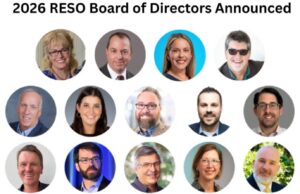This week’s presidential announcement of a new initiative to increase access to solar energy for all Americans, in particular low- and moderate-income communities, is an exciting expansion of IREC’s groundbreaking work in this area, which began in California.
In recent years, IREC has driven the discussion on how shared renewables can benefit low-income customers. One novel approach has gained considerable traction in California, where IREC proposed the CleanCARE pilot program. This would modify the existing California Alternate Rates for Energy (CARE) program, allowing low-income CARE customers the option of shared renewables bill credits to reduce their monthly bills instead of the traditional rate discount.
IREC promotes community shared solar in a number of ways, by participating in the development of shared solar rules, and by sharing (and publishing) best practices. Our regulatory experts are extensively engaged in several states that are expanding or considering shared solar programs, working directly with utilities on program implementation and engaging in the regulatory process. Structured the right way, shared solar programs can help low-income customers participate in and benefit from local, clean, renewable energy.
Confused about terminology?
Shared solar, community solar gardens, shared renewables – these are simply different models, all with the same goal. In whatever form, sharing solar energy production enables utility customers who would otherwise be unable to participate and benefit from renewable energy (i.e., renters, low-income customers and those with shaded roofs).
“The new initiative announced by President Obama this week is totally aligned with IREC’s core goal of expanding access to renewable energy to more energy consumers,” according to IREC Regulatory Director Sara Baldwin Auck.
“IREC is actually in the process of launching our own initiative to look specifically at how community and shared solar programs can be structured to promote access for low-income customers,” adds Erica Schroeder McConnell, who represents IREC in regulatory matters such as shared solar. “These customers face some distinct barriers to accessing renewable energy. Both IREC and the new federal initiative are seeking to address these barriers.”
As a result of the national initiative and the attention it is receiving, we can expect to see more people getting interested in community and shared solar, and more states and utilities proposing projects and programs. IREC will continue to play a key role, as our expertise helps stakeholders with a number of challenges, including choosing the most appropriate structure and regulatory model for each program, and establishing how to value the energy it produces.
In Colorado, where IREC engaged in the regulatory process for shared renewables, more than 75 percent of utility customers now have access to a shared renewables program. IREC’s goal: to see adoption rates like this in many more states.
See full details of the president’s initiative here.

















